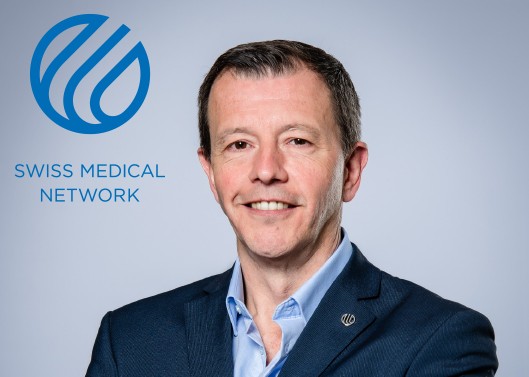“Reducing costs through AI”

Swiss Medical Network is the first hospital group to pro-actively participate in the development of an AI based solution that can code medical records. Meet Robert Derendinger, a pioneer who believes in a forward-looking solution.
Since when have you been working with Swisscoding and why?
We began our collaboration with Swisscoding around four years ago driven by the increasing shortage of medical coders and the ever more complex tariff requirements of the Confederation, such as SwissDRG or ST-Reha. It seemed appropriate to have a backup partner. This collaboration allows us to ensure the continuity of coding, which remains the most important foundation for generating invoices for insurance companies.
How did you come to think of AI to support your medical coding process?
For several years, we have been looking for solutions to automate medical coding. In many complex cases, coders do not always receive sufficient documentation or information from doctors. And we face a real difficulty when the result of the coding does not cover the costs of the institutions. In this context, the automation of medical coding could take on part of the workload of coders, giving them more time to collaborate with doctors and achieve a coding result that fully corresponds to the treatment.
And how did your AI adventure with Swisscoding begin?
I had shared my search for a solution to automate coding with Mr. Stefaniak. One day, he approached me and suggested a solution based on artificial intelligence. For it to work, he needed to «feed» the machine with medical documents, teaching it to read and code them. He needed a large amount of data. Thanks to a data anonymization system installed at our end, we were able to securely transfer anonymized orthopaedics data, along with the existing human coding documentation, allowing the machine to learn through comparisons. The results were impressive: in the field of orthopaedics, the machine can achieve an accuracy of 98%, which corresponds to the accuracy of a human medical coder. This is very promising for the future.
«This technology improves the quality of administrative care for patients and reduces costs at the same time»
Robert Derendinger, Director GAP, Swiss Medical Network
How is the implementation in your systems, is it complicated? Do you need to train personnel?
Absolutely not. The machine directly «interprets» the documents in the patient files and automatically places the codes in the correct location in the file, ready for invoicing.
Have you discussed this with your coding teams?
Of course, from the very beginning. Naturally, the technology raises concerns. No one wants to be replaced by a machine. But in this case, I am convinced that the profession of medical coders is not at risk from AI; they can focus on control tasks and supporting doctors, with the aim of ensuring the quality of the files. We need qualified individuals who can bridge the gap between the medical and financial worlds, and I believe that medical coding teams can play a real role in this function.
What is your future vision for your hospital group with this technology?
In the first phase, I hope to optimize our coding processes through the improved quality of medical documentation, which will be achieved by coders who are relieved of a significant workload. Additionally, by coding standardized cases faster, we will also be able to issue our invoices more quickly. One must consider that the machine codes in 5 seconds, whereas a person takes 25 minutes.
What about the healthcare sector in Switzerland overall?
I hope that in the long term, other hospitals will also embrac the AI revolution, as the potential is enormous. This technology will allow us to improve the quality of administrative care for patients while reducing costs. By standardizing coding, deviations in human interpretation will be eliminated, making it easier to compare institutions to determine best practices. Everyone benefits from this standard: hospitals, patients, and even insurers, who can reduce their control costs, which may impact insurance premiums. The dynamic of continuous improvement has only just begun.
Related Posts

Meet the team Regina
We’re delighted to welcome Regina Hoffmeister, who recently joined the Swisscoding team to strengthen our coding presence in the German-speaking part of Switzerland.

Meet the team Marie
Marie Gargallo joined Swisscoding Technologies in September to contribute to the business development of our AI-powered coding solution, CODY.

